How to Build a House in Yucatan
Before we moved to Yucatan, we spent two years renovating a 70-year-old Spanish Revival home in central California. While the process was initially quite enjoyable, several unexpected problems resulted in a project that took twice as long to complete than originally planned. It also cost a considerable amount more than we had budgeted. In the end, we swore off another project and bought a fully renovated house in Merida’s Centro Historico for considerably less.
Oddly enough, it didn’t take long before we found ourselves engaged in the renovation of a smaller colonial house to use as an office. Perhaps we’re slow learners, or we just can’t accept defeat. Yet, contrary to our expectations, the project was completed quickly and on budget, despite the arrival of a major hurricane near the end of construction.
If you plan to renovate one of Merida’s lovely colonial homes, or to build a new home in the area, don’t be surprised if your experience is like either or neither of ours. No matter where you are in the world, building a house can be simple or complicated, easy or hard, a dream or a nightmare.
Having said all that, there are some things that you should consider if you are going to build or renovate in Yucatan. Many of our readers have asked our opinions on this subject, so we are offering them in this article. By no means is this meant to cover every possible situation, and we would hope that anyone who has something valuable to share will comment below.
1 - Buy Local
The most important thing we have learned is that if you are building in Yucatan, then choose a local architect and construction firm that has several years of experience in Yucatan. Select those who have a portfolio that matches your tastes and a list of satisfied references. There are many here speak English and their firms have at least one additional person on staff who speaks English as well. Several architectural firms over the years have developed their English-speaking skills in order to communicate better with English-speaking clients. The local architect school, FAUADY, graduates more architects every year and is a well-respected school in Mexico. There are no shortage of competent, honest and creative local architects.
Many foreigners who come to Yucatan learn the basics of renovation and remodeling. Depending on the scope of your project, they may offer a reasonable alternative to using a local firm. But remember that they do not have friends or family in the business, nor in government, and it is through this network of personal resources that the majority of Mexican business gets done.
Local architects and contractors are well connected and know the local markets and best practices. They will be able to advise you on construction and design techniques that work best in a tropical climate using materials that are most common to the area. They know the authorities in the government and the culturally accepted way to make things happen. In the long run, they will probably achieve the results you want at a better price.
2 - Get An Estimate
Ask for a design and presupuesto (estimate) from more than one firm. Most will include the price of this effort in the cost of renovation and/or construction. The ones who are not awarded the contract will charge a nominal fee, which depends on the scope of your project. This process will educate you on many levels and help you to choose the best design, engineering and construction options. It will also help you determine which firm is the best fit for your project and is the most responsive to your needs.
Always obtain a design and presupuesto BEFORE starting work. It may be impossible to have a design that is complete in every detail, but the closer it is to including all line items required to complete the project, the fewer unhappy surprises there will be later on.
Most firms we interviewed will charge as little as 10% and as much as 30% of your construction budget to design, administrate and supervise your project. The amount you pay is not always a case of “you get what you pay for,” so be sure to shop around.
3 - Follow The Rules
Follow the laws of Mexico. In the past, many construction projects in Mexico have been preformed by an informal labor force and paid abajo de agua (literally, under water, but it means 'under the table'). Many changes by federal and local governments makes this approach more risky than it used to be. Avoid using free-lance labor on large projects, and be sure that all workers are paid Social Security. Not paying Social Security (IMSS... pronounced "eemz") may save you a few pesos, but you are taking that money right out of the mouths of the families being supported by the (mostly) men working on your house. And if anyone gets hurt working on your project, IMSS has them covered medically so that it will not come out of your pocket. Those abañiles (workers) work hard for you... paying them Social Security on top of their daily wage is only fair.
4 - Get A Contract
Obtain a standard construction contract from your Mexican architect or Notaria (lawyer). At a minimum, it should limit your liability for budget overruns and may include incentives for completing the project to a schedule. The contract should also stipulate that all workers be paid Social Security by the contractor (not you). The contract must be signed by all parties and notarized to be enforceable. All of the firms listed below will enter into a standard construction contract.
5 - Do Your Accounting
If the intended use for your finished renovation or new construction is a rental property or other income-producing venture, you should contract with a lawyer and accountant to establish a Mexican corporation (SA de CV) or limited liability company (S de RL de CV). You will need to report your rental or other income and pay taxes, or risk penalties and fines from Hacienda, the Mexican IRS.
6 - Permitame
Always obtain all required permits before beginning work. Many colonial homes in Merida’s Centro are designated as "historic" and will require a permit and inspection by INAH (National Institute of Anthropology and History). If you fail to obtain the proper permits, your project can be suspended and you will have to pay fines to resume.
We used to provide a list of local architects and construction firms that we knew to be good. But the list of known and good architects and builders has grown, and now it feels as if any list is leaving someone out. Longer too is the shorter list of architects and builders with whom people have had bad experiences. We will leave the comments to this article so you can read about others' experiences and opinions. But recommending or not recommending someone has become fraught with peril and is no longer practical.
7 - Check References
Suffice it to say that you should ALWAYS check references before you go ahead with someone to design or build your house. There are plenty of good people here in Merida with references. You could also check with Profeco, the federal government organization that monitors consumer affairs. If a business person in Merida has had problems enough that someone has reported them to Profeco, you can find out. If you do not speak good Spanish, consider taking a Spanish-speaking friend with you to make the visit easier.
8 - Have Fun!
This might be the hardest thing to do sometimes. Building a house anywhere in the world is stressful and has been known to break up marriages. Try not to take out your frustrations on your architect, your builder, your workers or your partner. Look at this beautiful thing you have the privilege of creating and enjoy the process!!
Suerte!
Profeco
address: Calle 49 No. 479-A, x 54 y 56, Centro, 97000 Mérida, YUC, Mexico
phone: +52 800 468 4212
website: https://www.gob.mx/profeco




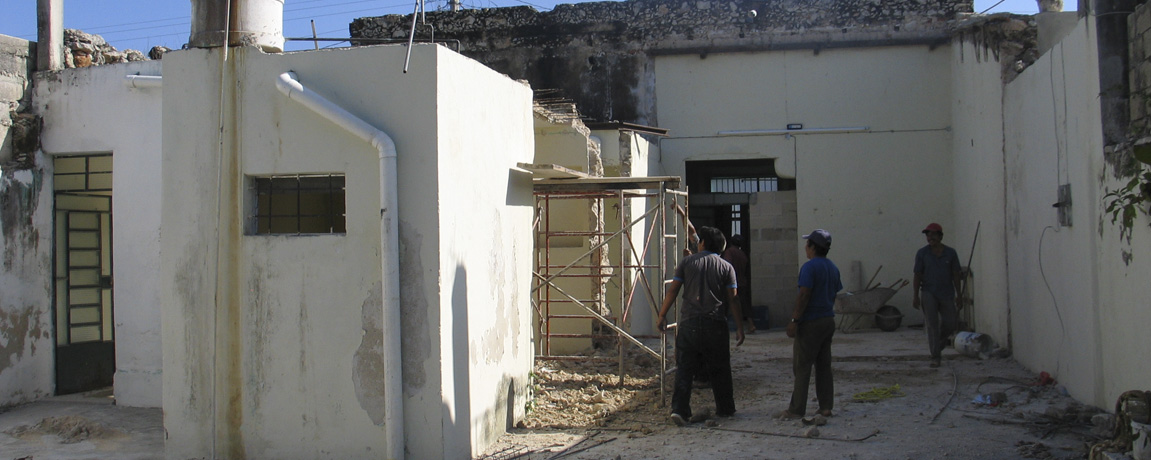


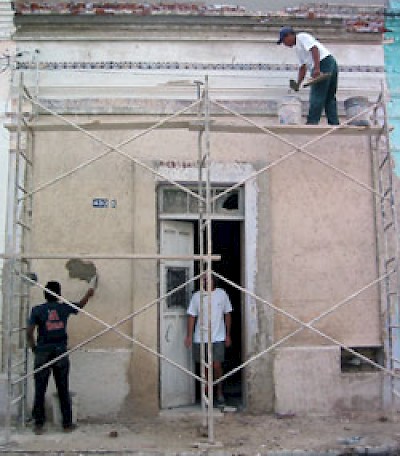
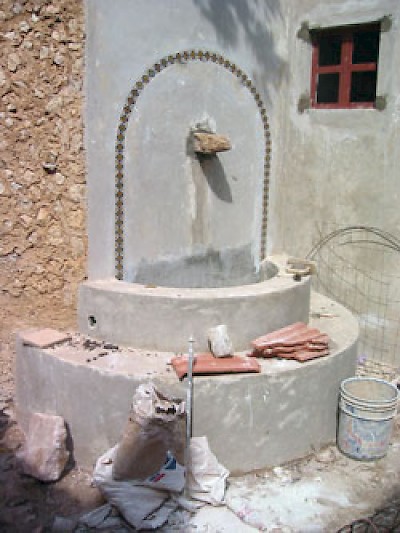
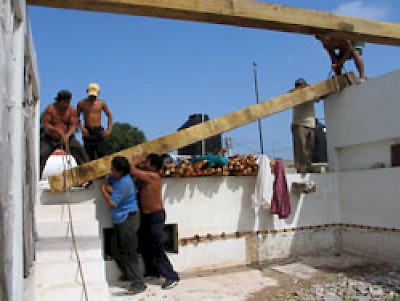
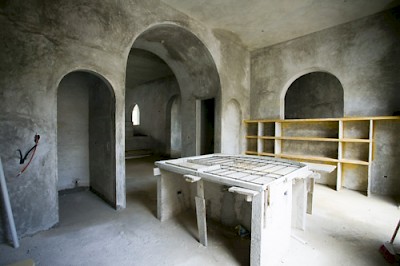
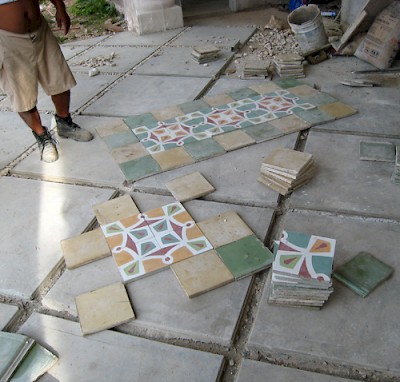
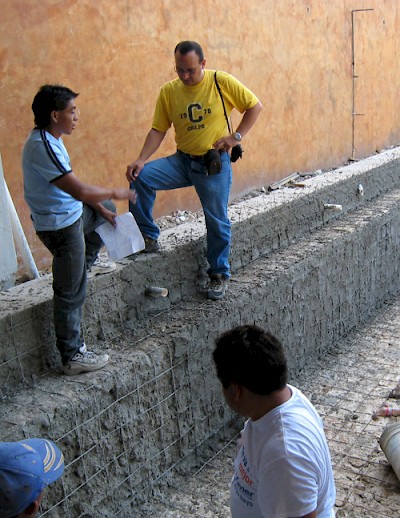
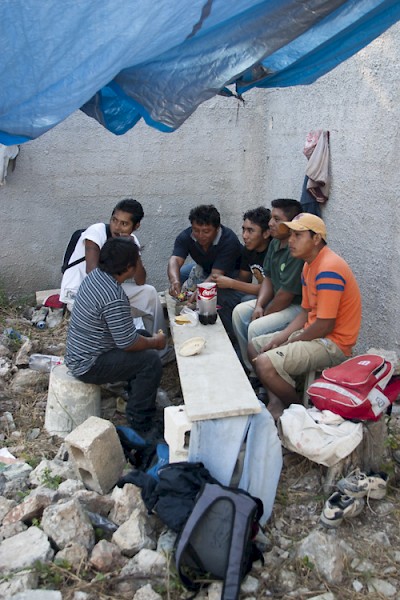

Comments
Jim 14 years ago
I am currently having an addition built on my place in Puerto Morelos and after having a few estimates given, I found the following unit rates for construction, note that all rates are given in pesos:
Block 50/ square meter
Roof 200/square meter
Slab 150/square meter
Footings 150/linear meter
Concrete Posts 60/linear meter
Exterior Finish 60/square meter
These prices are not written in stone because my current contractor was willing to knock off almost 20% due to the fact that he wanted the work and was in the process of completing another project in the area. Key thing is to negotiate!!!
By the way the building materials seem to be running me approximately 100 pesos/square foot and labor about the same. Water and sewer, doors, windows, electrical not included in the base price. Also one thing interesting to note is that your local building supply store is far cheaper than Home Depot!
Reply
Kevin Cott 14 years ago
Scott "Answering your questions:
I have $160,000 USD available to build a home in Merida. Excluding cost of land, what size home could be built to American standards for that kind of money? With back courtyard and moderate size pool.
K.C. - For that budget, it could be done. It is all depends of the scale of the project.
How long would it take to build a home?
K.C. - I am a architect and we bought a colonial house, a two bedroom house, we built a pool and renovated the whole house. It took about 6 months. Having the money in your hands, as anything else, you can move things fast. My working team is very professional and they did an excellent work.
After the home is finished what might it’s immediate resale value be?
K.C. - At least 30% or more. All depends of the location.
A general estimate is all I am looking for… Of course.
K.C. - To get a price, you will need drawings for the scope of work.
Look at it from the perspective that if you had the money what might you be able to build that would satisfy you own personal expectations.
K.C. - Our house is a 2 bedroom colonial house in Merida, space enough for the three of us and we did everything with half of your budget (not including the cost of the house). We are very happy with the product.
Thanks in advance for your input.
K.C. - Sincerely,
Kevin Cott - Architect, fluent in Spanish and English
Experience in USA and Merida, Yucatan
Reply
Tom 14 years ago
Thank you for the great information! We decided to rent and keep looking around :).
Reply
Working Gringos 14 years ago
Just to clarify, many of us here also have water softening systems, which is what you might be referring to as the membrane system. This requires the addition of salt on a periodic basis, but salt is cheap and plentiful here. The reverse osmosis system is separate and in addition to the water softening system, which does use a membrane between the salt and the actual water that goes into your house.
As you can imagine, we've been running computer systems for years here. We use a UPS system for each of them... a surge protector is not enough. And in a big lightning storm, we turn everything off. Also, we learned the hard way once that it is also important to unplug the telephone cord from the modem in a big storm. One lightning hit to a telephone pole, and your computer can still get fried, even if it is turned off.
Reply
David & Suzy 14 years ago
"Bob Derek"
There really are no maintenance costs involved with a pressure system other than the electricity to run the pump. By membrane system I assume you are referring to the membrane inside the pressure tank? Yes there is a membrane in the tanks to prevent the pump from turning on every time you turn on a faucet.
The reverse osmosis setup is a separate system. Typical systems are small and located near or under a sink, consist of three small filters plus a small pump and pressure tank. This gives you a separate spigot near the sink that you can use for drinking water. Normally the filters are replaced yearly (I usually replace at 10 - 11 months). I do not remember the cost of these but they are relatively low cost. The system does use about 25 gallons of water a day to automatically flush its self periodically.
It is usually recommended to use a water softener/conditioner in conjunction with the reverse osmosis system. The maintenance costs on the water softener is just the cost of the salt which again is minimal.
I do not know about the transformer. Electrical outages and brown outs appear to be different depending on your location. I have had a few low voltage moments. I usually notice it when the TV gets dim when all of the cities air conditioners go on. I just turn the TV off. It may eventually burn out a pump motor if the pump is continually run in that condition but most pumps are cyclic and the odds are minimal.
Personally I would not consider one. If you have a computer that is on all of the time you could protect it from under voltage with a computer power supply.
Hope this answers some of your questions
Reply
Stan Freeman 14 years ago
Thank you for taking a stab at renovation costs. I do understand that it is difficult to pin down but you made a great effort and I appreciate your help.
Cheers
Stan
Reply
Colm 14 years ago
Thanks for all your great information. My wife and I visited Mexico for the first time last year and it has left an indelible impact on us and our consciousness. We hope to visit again next year and look for a piece to call our own.
Thanks again
Reply
bob derek 14 years ago
Hi.
Can you tell me what the maintenance costs are for a pressure water system?
I have read that these are reverse osmosis?
I believe these are "membrane" systems?
Is it advisable to have the pressure system in order to enjoy a good shower, or use more than one faucet at a time, etc.?
I have also read about installing a "transformer" to be assured of reliable power.
Any comments on this (with costs) would be appreciated?
thanks
Reply
CasiYucateco 14 years ago
Stan,
Are you asking for the cost of "fixing up" after purchase? The cost *including* purchase can be all over the map, due to the location (or location of business or residential nearby), due to ceiling heights, garden space, etc, etc.
If the walls and floors are in good shape, here are a few numbers for ESTIMATING (could be far off, depending... on everything):
each new electric connection: wall outlet, switch, ceiling fan box, wall light, ceiling light: $25 US + cost of wiring and materials (switches {apagadores}, outlets {contactos}, etc)
Polishing old tile floors: a few hundred dollars.
Painting: $5-6 US per square meter (varies wildly).
Replace plumbing: varies too widely by house.
Water filtration and pressure system after all plumbing is replaced: $1000 US or more + maintenance, or simply go with non-pressure cisterna/tinaco system.
There isn't a way to give a "square foot cost for renovations" since the conditions of each house varies so widely. If it is "almost livable", then it depends on what standards you want to raise it to: functional and usable? colonial restoration? US electrical & plumbing? All those factors make it impossible to give a per square foot cost.
When I mentioned $25 to $35 per sq ft, that was qualified by saying it was ONLY the Raw Construction with no finish materials: no windows, doors, tiles, electric fixtures, plumbing fixtures, no hardware, no shutters, no screens. Raw cement construction that gives you a concrete box. You could probably assume that renovation wouldn't cost more than than (maybe 1/2 that, maybe less?) but there are far too many variables house by house for any honest estimate on a per square foot basis.
The most important consideration is that the roof be sound and that the walls have sound cement mortar between the stones. If the old lime cement is powdering away, that will have to be redone. Surprisingly, that isn't too expensive. Replacing or repairing a roof takes a lot of concrete and steel - expensive materials.
Reply
Stan Freeman 14 years ago
With regard to the prices mentioned above of $25-$35 USD per sq. ft. Is this for new construction? I am coming to Merida soon to look at some fixer homes, probably old colonials with good foundation and bones and in almost livable shape and wonder if I buy one of those what would cost per sq. ft be for just renovations. I realize it depends on what materials I would use but a ballpark would be good if someone could give me that. Thanks for all the great info yucatanliving.com
Stan
Reply
CasiYucateco 14 years ago
Adam,
Just curious: If your price estimates ranged from $350 US to $600 US per square meter, about where did your final project come in, once completed and all costs considered? (if you don't mind sharing) Just wondering where Carlos came in on that range. Thanks!
Reply
« Back (10 to 21 comments)Next »